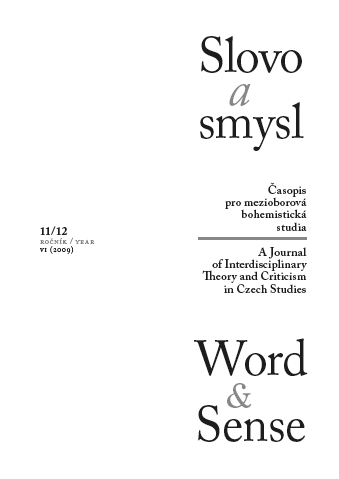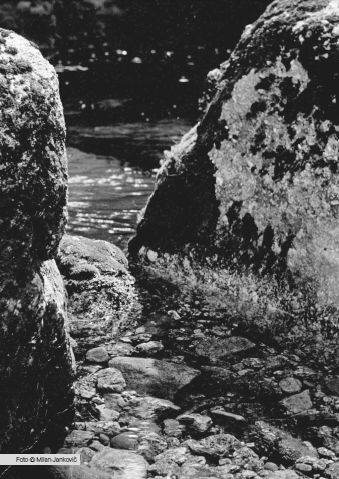A Brief Introduction to František Gellner
František Gellner was born on 19th June 1881 in Mladá Boleslav as the son of a not particularly wealthy Jewish merchant, Karl Gellner. In Mladá Boleslav Gellner completed both his primary and grammar school education. While he was still at grammar school, his literary and artistic interests began to show.
Having completed his secondary education, he left for Vienna to study technology, though actual study took second place to a bohemian existence (more or less financed from home). He had some contact with anarchist circles, contributing to Nový kult, the political and cultural magazine with anarchist leanings published by Stanislav Kostka Neumann.
In 1901 František Gellner left for the Academy of Mining in Příbram. His life as a student there was hardly less tumultuous than how he had carried on in Vienna. He remained in touch with the anarchist and bohemian milieu around Neumann and his Prague villa at Olšany, often travelling up to Prague. It was around this time that he entered into an apparently deeply felt relationship with the writer Marie Majerová. Soon, however, in 1904, Majerová married Jiří Stivín, though Gellner’s relationship with her continued to resonate during his later period in Paris.
At the start of the century Gellner published two collections, which are still perceived as the core of his oeuvre and its most vital component. In 1901 there was the collection with the provocative title Po nás ať přijde potopa! (Après nous le déluge!), and in 1903 the ironically titled Radosti života (The Joys of Life).
The main thrust of Gellner’s work is a critical rejection of practically anything recognised at the time as a social norm. He derides the ideals and lifestyle of the bourgeoisie, though he takes a sceptical view of all ideologies and in the name of common sense is apt to call into question anything at all (including anarchism, with which he was, for a time, in relative sympathy). Unsecured existence is not treated in any liberated spirit, but is felt more as a burden to be borne; in some lines, his verse takes his view of the anchorlessness and inanity of life to well‑nigh cosmic planes.
Gellner’s attitude to the prevailing Decadent/Symbolist trend in literature is thoroughly negative (for all that many of the poems in his first collection are still in thrall to it); his mode of expression is wilfully un‑literary, he invariably calls a spade a spade, and his forms are simple (predominantly the four‑line verse, reminiscent of Heinrich Heine). In contrast to the exalted stylisations of the lyrical subject in earlier Decadent and Symbolist writing, the boundary between the lyrical subject of Gellner’s poems and the poet’s own experience is obliterated, leaving an impression of documentary authenticity. The frankness of the introspective and confessional character of some poems was found shocking. He could be inspired by such peripheral genres as the night‑club chanson and he was quite ready to use sub‑standard forms of language, and this too was held to be offensive to good taste.
Gellner expanded the range of the language of literature by recourse to every stratum of the colloquial and sub‑standard. These non‑literary elements do not dominate his verse, but what is noteworthy is their intermingling with other registers (including, for example, echoes of sundry literary clichés, also elements drawn from journalism and scholarly discourse); the sublime and the base appear side by side, the sublime being devalued by the perspective ‘from below’. The confrontation of semantically distant ideas is also often aided by rhymes that take us by surprise.
A key theme of the poems is disillusionment – standing in contrast to a youthful zest and earnestness (or at least a longing for it). As for matters of the heart, we find their erotic foundations being stripped away by Gellner’s sober scepticism; sensual pleasure rapidly evaporates to be overlain by emptiness and disgust. Besides the disillusional portrayal of the erotic, Gellner brought other new themes to literature, notably the entire range of the everyday – his poems are played out in pubs, night cafés, the street and brothels.
The spokesperson of Gellner’s poems observes ordinary life rationally and with scepticism, unveiling its banality and superficiality, but he is ready to turn his scepticism and irony against himself. Attempts to escape all‑pervading banality by seeking to be independent of the majority way of life of society (bohemianism, taking refuge in travel) are ultimately marked down as doomed to failure, often just as flawed as that which gave the impulse to escape. The frequent auto‑stylisation of an old soak and bohemian to personify the rejection of social convention is self‑critically reflected in some of Gellner’s poems as sterile and futile.
From the very outset, Gellner was both a writer and an artist. He published cartoons and illustrations in magazines (Nový kult, Šibeničky, Karikatury, Rudé květy), and he provided the illustrations to a re‑edition of Karel Havlíček Borovský’s long poem Křest svatého Vladimíra (The baptism of St Vladimir, 1904), and to his contemporary Karel Horký’s collection of verse Paličovy sloky (Verses by an arsonist, 1905). With their simplifications and artistic ‘shorthand’, these drawings evince a clear debt to Art Nouveau, and are typified by boldness of line, flatness of projection and a striking alternation of black and white areas.
Gellner’s first attempts at a larger‑scale literary work date back to his student days in Vienna. In the comedy Přístav manželství (Haven of marriage, commenced 1902) he portrayed the banality and mechanical repetitiveness of small‑town life. The torpidity of provincial existence is laid bare in a sequence of scenes that are nearly all talk with next to no action. In the sequel the play lacks any dramatic tension. Gellner was to battle with the same problem time and again: obviously attempting to capture the banality and vacuity of everyday life, he would string loosely together scenes that each had a point of their own. Smaller genres such as the feuilleton or short‑story (which in Gellner tend to be loose of structure and oblique as to the action) can sustain this approach, but in larger units the impression of a unitary whole can evaporate.
In 1904 Gellner enlisted as a one‑year volunteer, only to have a very hard time of it with the Austrian war machine, further aggravated by the reputation for anarchism that went before him. After a year of being persecuted he was dismissed and went off to Munich to study painting. This was yet another course he failed to complete. Before 1905 had run its course, he moved to Paris. Little is known of his time there. Having split with his family, he had no material support and seems to have led a life of financial insecurity, sinking probably into poverty. He returned to Bohemia in 1908 because his father had fallen ill. In the following year he entered the Academy of Painting in Dresden, where, at least for a year, he was a committed and unusually successful student. After that year he set off back to Paris.
Gellner returned home for good in mid‑1911. In the autumn he was approached by Arnošt Heinrich, an editor on Lidové noviny, with an offer to work for this Brno daily. Gellner accepted the offer and moved to Brno. Bringing Gellner on board suited Heinrich’s policy of seeking good‑quality contributions in both literature and journalism, but above all Gellner was the type of cartoonist and illustrator that matched Heinrich’s conception of the role of the newspaper cartoon: it wasn’t there just to amuse, but also to comment effectively – critically and polemically – on current affairs. František Gellner became intensely interested in public affairs, selecting the political topics of his texts and cartoons in line with the paper’s own policy – like the rest of the board he took a stand against the Germanising tendency of Brno city hall, against clericalism, escalating militarism, Austrian government policies, and the involvement of Czech MPs in them.
At Lidové noviny Gellner was charged with filling the back page of Večery, the Sunday supplement, with his texts and illustrations. He also contributed to the main body of the paper under the feuilleton rubric. The paper thus saw first publication of many of the poems that were later gathered together as his last collection, Nové verše (New verse), feuilletons, short stories (some of them compiled under the title Cesta do hor a jiné povídky [A Trip to the Mountains and other stories], which he published in the spring of 1914), and some of his translations (of, inter al., Frédéric Mistral); his novel Potulný národ (Itinerant nation) and the long narrative poem Don Juan appeared in instalments.
This Brno period brought some calm, if not a satisfying sense of fulfilment, into Gellner’s personal life. His poetry, gathered later in Nové verše, is marked by a deliberate distancing from the previous collections. He now inclines more to narrative verse and observation of the world about him, while toning down his former leaps of meaning and shifts of style; his awareness of the absurdity of existence endures, but his view of the mundanity of the ‘petty world’ is now more forgiving. Besides these poems he writes both politically satirical and some purely humorous verse; in both, he further develops his talent for the surprising rhyme.
With the passage of time Gellner’s art also undergoes modification. The earlier black‑and‑white contrasts, the flatness of perspective and the solitary, independent figures are replaced by shading to indicate the three‑dimensionality of shapes and spatial organisation. Yet he doesn’t lose his knack for both hyperbole and telling understatement, against which the crucial detail stands out the more. His stridently topical, socially and politically oriented drawings are supplemented by the illustrations he produced to accompany his own poems; these exhibit a great delicacy and often have a poetic aura of their own. The figures in Gellner’s pictures are in part well observed types, in part targeted caricatures – mostly political during this Brno period.
At the outbreak of the Great War Gellner was among the first to be drafted. In poor health (rheumatism and sciatica) and apparently suffering from a general apathy, he left for the Galician front in August 1914. Here he was seen for the last time, during the retreat from Zamość. From mid‑September 1914 František Gellner was listed as missing.
The uncertainty of his fate, plus certain rumours that finally proved false, for a long time fed the hope that he would pop up somehow once the war was over. For some time it was even conjectured that he was living somewhere incognito. Out of his posthumous papers came his last collection, Nové verše (1919, ed. S. K. Neumann), while the vast majority of his literary output was gathered together in three volumes (1926–1928, ed. Miloslav Hýsek). His artworks are still waiting for any analogous compilation.
Translated by David Short.


